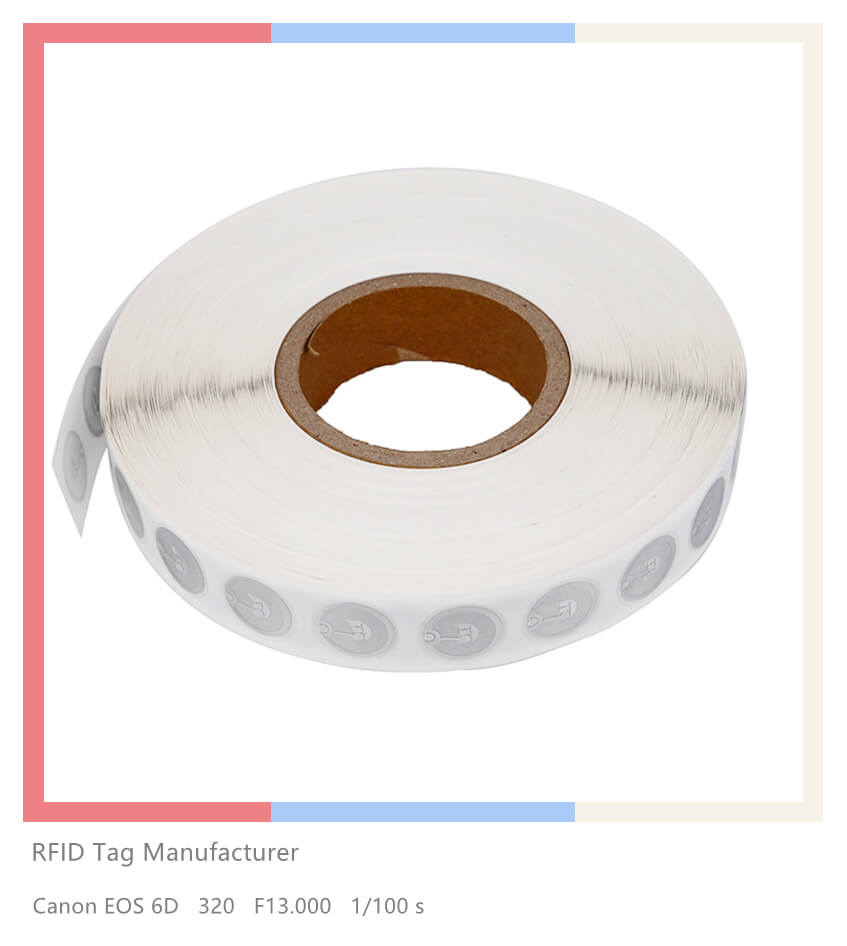NXP Ntag®216 NFC label
The NXP NTAG®216 NFC label is a type of Near Field Communication (NFC) tag that uses the NTAG®216 chip, which is manufactured by NXP Semiconductors.
NXP Ntag®216 NFC label
The NXP NTAG®216 NFC label is a type of Near Field Communication (NFC) tag that uses the NTAG®216 chip, which is manufactured by NXP Semiconductors.
NFC is a wireless communication technology that enables devices to exchange data when they are brought into close proximity, typically within a few centimeters. NFC tags like the NXP NTAG®216 can be used to store and transmit information, such as web links, contact details, or authentication codes, to an NFC-enabled device, such as a smartphone or tablet.
The NXP NTAG®216 chip is a popular choice for NFC tags because it has a large memory capacity of 888 bytes, which allows it to store more data than some other NFC tags. This makes it suitable for a wide range of applications, including product authentication, marketing and advertising, and access control. The NXP NTAG®216 is also compatible with most NFC-enabled devices, making it a versatile and widely used NFC tag.
What is the difference between NTAG 215 and 216?
NTAG 215 and NTAG 216 are both types of NFC (Near Field Communication) tags produced by NXP Semiconductors. These tags are commonly used in various applications, such as contactless payments, access control, and marketing.
The main difference between NTAG 215 and NTAG 216 is their memory capacity. NTAG 215 has a memory capacity of 504 bytes, while NTAG 216 has a memory capacity of 888 bytes. This means that NTAG 216 can store more data than NTAG 215, making it more suitable for applications that require larger amounts of data to be stored on the tag.
In terms of technical specifications, both tags operate at 13.56 MHz and are compliant with the NFC Forum Type 2 Tag standard. They also have similar read and write ranges and are compatible with most NFC-enabled devices.
the choice between NTAG 215 and NTAG 216 depends on the specific application requirements and the amount of data that needs to be stored on the tag. NTAG 215 is more suitable for applications that require smaller amounts of data, while NTAG 216 is more suitable for applications that require larger amounts of data.
What is the difference between NFC 216 and NFC 213?
The main difference between the NFC NTAG213 and NTAG216 tags is their memory capacity. The NTAG213 has a memory capacity of 144 bytes, while the NTAG216 has a memory capacity of 888 bytes, which is more than six times the capacity of the NTAG213.
This means that the NTAG216 can store more data, such as larger web links, more detailed product information, or additional authentication codes. Additionally, the NTAG216 has a higher reading and writing speed compared to the NTAG213.
However, the NTAG213 is smaller in size and less expensive compared to the NTAG216. It is also suitable for simpler applications where less memory is required, such as NFC-enabled business cards or loyalty cards.
In summary, the NTAG216 has a larger memory capacity and faster reading and writing speed, while the NTAG213 is smaller in size and less expensive. The choice between the two depends on the specific application and the amount of memory required.




